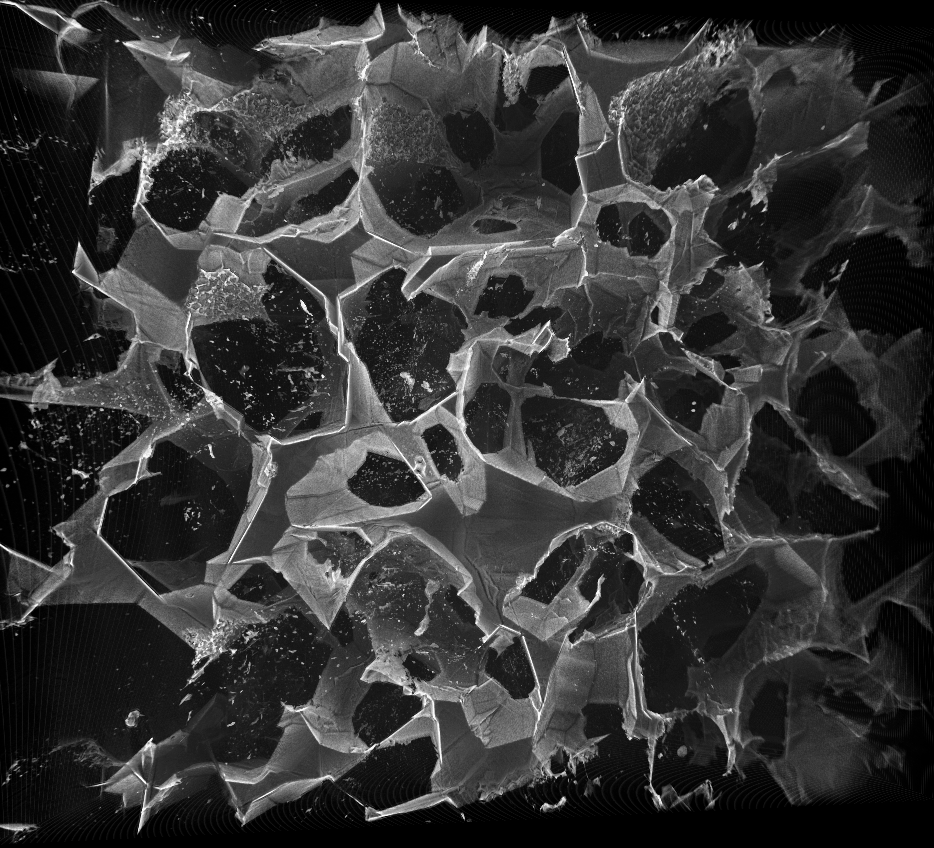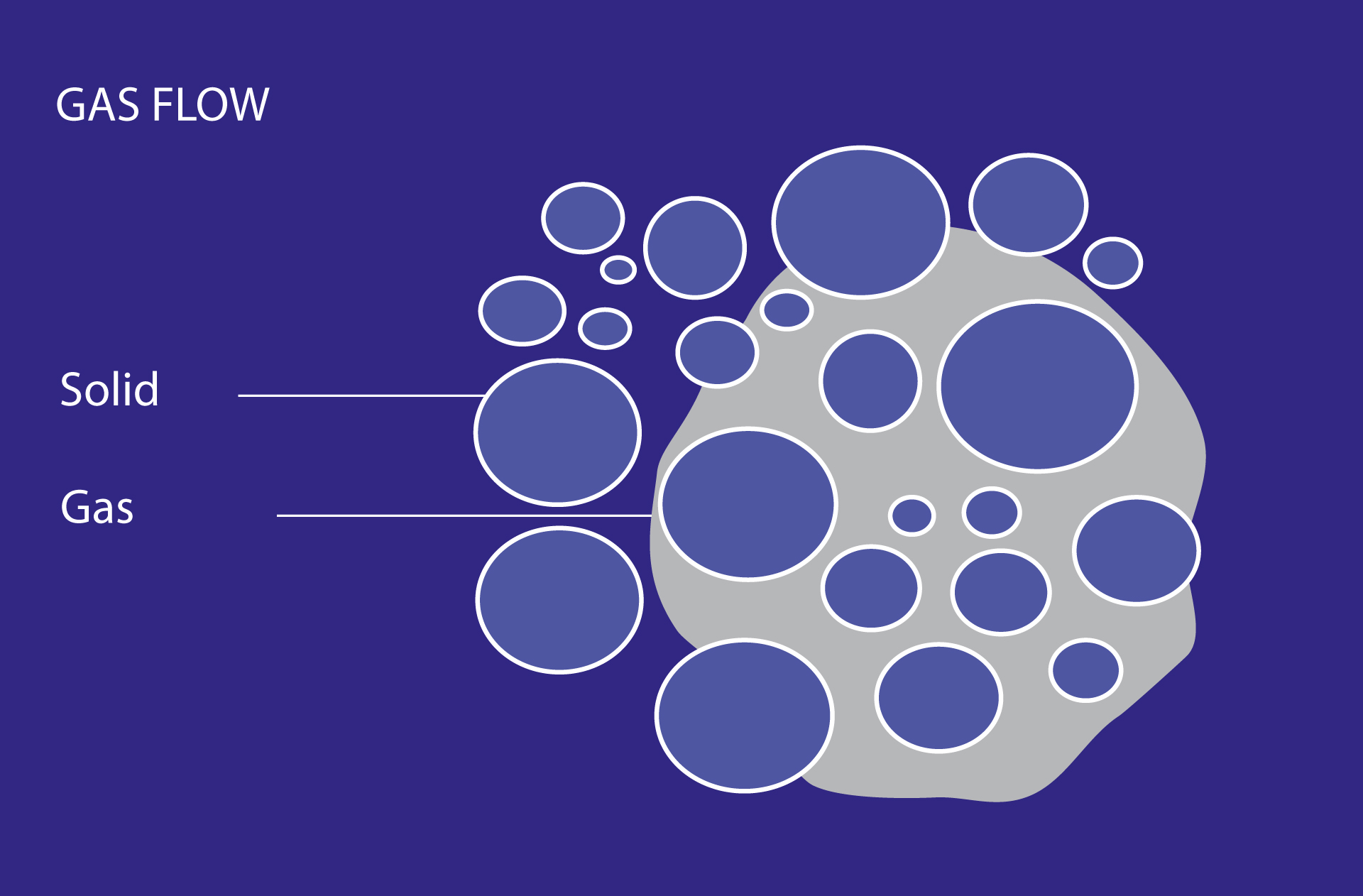What do asphalt, soil, fuel cells, plants, brains and even bones have in common? They all are so-called „porous media“. We find them practically everywhere. The porous structure and permeability is clearly revealed if we examine them under the microscope.
Gases and liquids can simply flow through them.
Researchers at the University of Stuttgart use the similarities in the physical properties of porous media to understand their behavior better and to support the research field with experiments and simulations.
Whether the environment, technology or biology – the area of applications are numerous. Some examples: the results may help us understand environmentally relevant topics (underground energy storage), they can support new methodological approaches in medicine (treatment of osteoporosis or multiple sclerosis) or even influence our mobility in the future (fuel cells).
Why research porous media?
Because it is important to understand what is going on in porous media.
We humans, natural surroundings and almost all the objects of our everyday life are permeable to a certain extent, but we have to take a closer look to see it. From the outside, they all look different.
If we zoom in very close, we can see their porous structure very clearly. From the inside they all look similar.

All porous media consist of solids and voids. Liquids and gases can easily flow through them. And these processes should be researched.
Why is it important to know what is going on in porous media?
There are many reasons for this, which usually all have one thing in common: They involve flow, transport, or deformation.
Flow: Porous media are never “empty“. There are always either liquids (for example water or oil) or gases (air, steam, oxygen, hydrogen, etc.) in their pores.
Transport: By flowing through the porous structures, liquids or gases can also transport other substances with them.
Deformation: Porous media can change their shape due to the forces exerted by liquids or gases, but also due to external loads. This process is called „deformation”.
The most interesting thing for researchers in the field of porous media is therefore to examine porous media above all from the “inside” and not only from the “outside” in order to better understand the processes in a holistic way. If we look at porous media in the zoom mode, we can reproduce the often very different porous structures in an analog model or in a digital computer model.
A: Food
What happens when frying fries?
Fries (potato = porous medium) contain water.
If the fries are thrown into hot fat, the heat causes volume changes in the ingredients of the fries, water flows and diffuses out of the fries. At the same time, fat gets into the pores and triggers a chemical reaction process that closes the pores and makes the fries crispy.
What happens preparing a jam sandwich with butter?
The pores in the bread absorb the butter. This makes the pores more impermeable to honey or jam.
What happens during the preparation of a filter coffee?
Hot water gets into the coffee filter and onto the coffee powder under pressure. In a solid-liquid phase transition, ingredients from the powder are dissolved in the water, which are transported into the jug with the water flowing through the filter pores.
B: Medicine
What happens when taking a headache pill?
The active ingredients of the headache pill are dissolved in the digestive system, then transported via the permeable (porous) intestine into the bloodstream and finally into the cells, where they dock to receptors and hopefully develop their effect.
What role does the blood-brain barrier play?
The brain itself and the so-called blood-brain barrier are porous media.
The blood-brain barrier is an important barrier between our blood and the functional tissue of the central nervous system.
It determines which substances are allowed to enter or not. It is only permeable for a few substances (for example water and oxygen)
and assumes an important filter function. It consists mainly of endothelial cells. These form the walls of the blood vessels
What role does the blood-brain barrier play for patients with multiple sclerosis (MS)?
In people with multiple sclerosis (MS), the blood-brain barrier is occasionally disrupted in some areas of the brain. Small gaps open up between the endothelial cells that form the wall of blood vessels and are normally close together. This increases the permeability of the blood-brain barrier. Now, the body's own defense cells are able to cross the blood-brain barrier. They reach the nerve tracts and attack them (autoimmune reaction). The increased permeability can be indirectly observed with magnetic resonance tomography (MRT). Contrast medium, which normally is stopped by the blood-brain barrier, can now escape from the bloodstream into brain tissue and generate an altered MRT image.
How does wound healing work?
Platelets are transported with the blood to the damaged area. They try to close it and make it impermeable to blood again.
C: Environment
What happens if the farmer sprays manure on his fields and it starts to rain?
The liquid manure flows into the soil by gravity and capillary forces. When it rains, components of the liquid manure are dissolved in the water and transported further into the depths, so that they can reach the ground water and contaminate it.
How do plants absorb water?
About their roots. Plant are porous as well, as is the soil. Plant absorbs water from the soil through their roots, whereby capillary and osmotic forces play an important role among many other mechanisms.
How can you prevent apples from drying out too quickly?
Store apples in a cool place to minimize evaporation at the surface. Sometimes the peel is also treated so that less juice diffuses through it.
D: Technology
How are toxic gases removed from vehicle exhaust gases?
Catalysts are porous components which on the one hand filter out particles and on the other hand also absorb gas components on their large specific surface.
Why does paper absorb ink? What happens to the particles and pigments in the ink?
Paper is a well-permeable porous medium which is able to absorb moisture. The particles in the ink are absorbed by the paper through capillary forces and dry quickly.
Why can diapers absorb and hold moisture?
Diapers consist of porous layers and a "super absorber". The super absorber reacts with the liquid (urine) and becomes a gel-like substance that does not leak from the diaper. This causes the porous layers to swell very strongly, i.e. there is a strong deformation and increase in volume.
How do clothes become water-repellent?
Impregnation ensures that water cannot pass through the permeable fabric. It makes the fabric hydrophobic, an important property that can become extremely important in gas-water flows. For example also in fuel cells.
Pretty Porous
01
01
What are Porous Media?
What do asphalt, soil, fuel cells, plants, brains and even bones have in common? They all are so-called „porous media“. We find them practically everywhere. The porous structure and permeability is clearly revealed if we examine them under the microscope.
In-depth text
Questions and answers
Credits: Natalie Weinman, Sven Tillack, Steffen Knöll

Visualization of a porous structure
Credits: University of Stuttgart / VISUS / Stefan Scheller

Fractures in the dry, porous soil
Credits: University of Stuttgart / SFB 1313

Humans are porous media themselves: extraction of the superficial facial vasculature from thermal images using mathematical tools known from image processing.
Credits: Image created within the international workshop “InFoMM Graduate Modelling Camp” at the University of Oxford.
